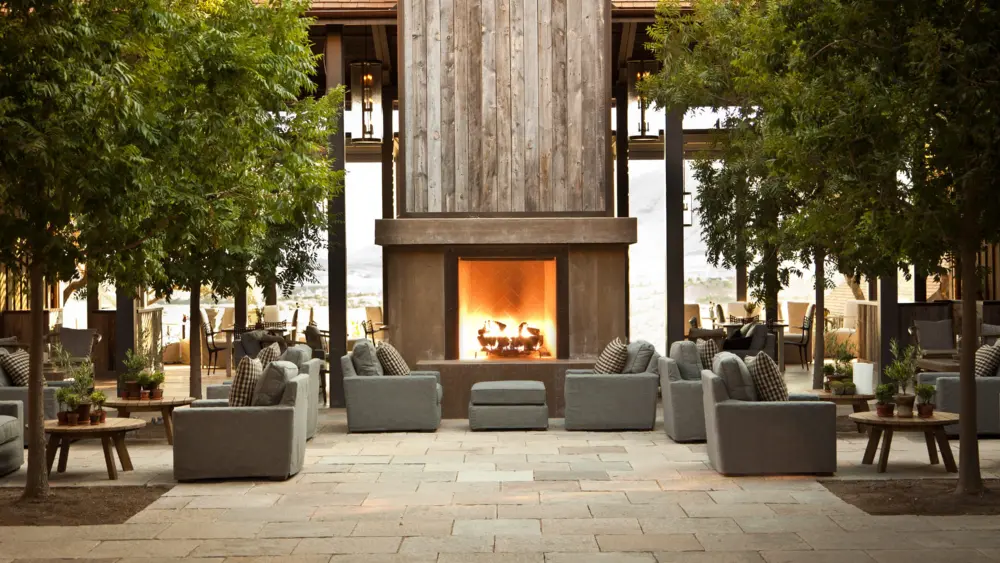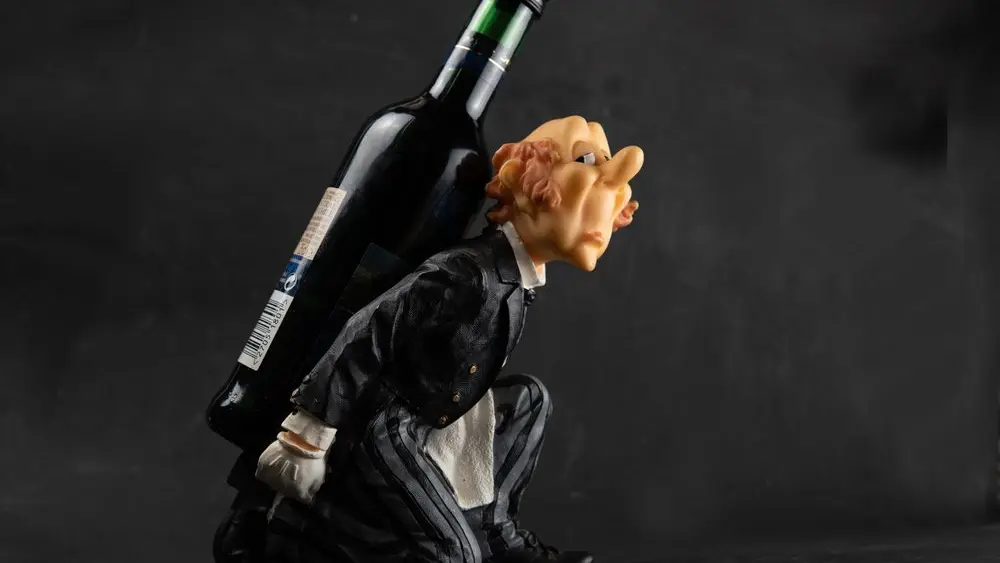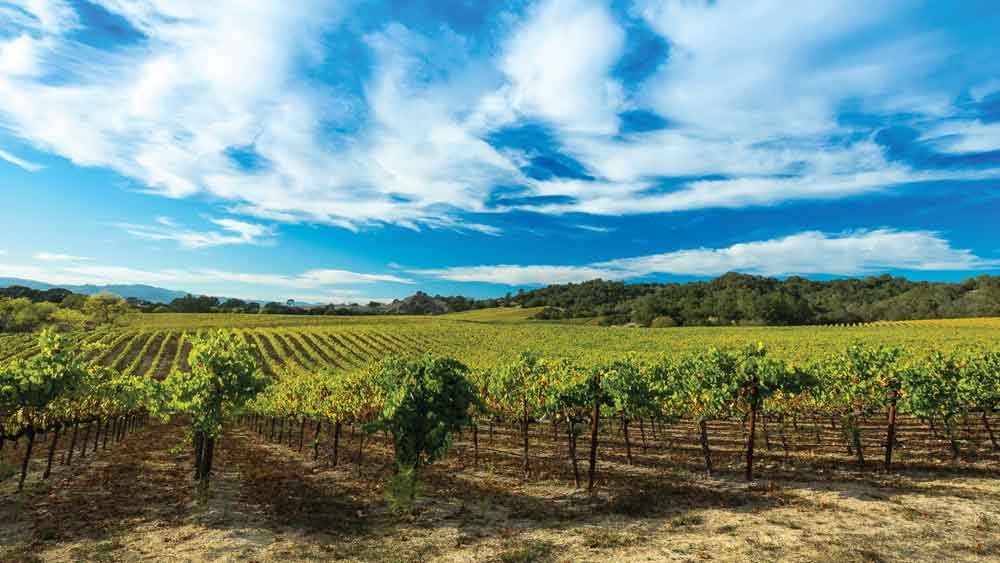
Located off Arata Lane in Windsor, Notre Vue Estate Winery & Vineyards doesn’t seem off the beaten path at first glance. However, pass through the elegant iron gates, and it takes another 10 minutes of driving on a dirt road through vast stretches of vineyards to make it up to the tasting room.
Located at the top of a steep hill, the tasting room is small and elegant. Tables and couches are situated inside a large white salon that opens up onto a sunny terrace decked with more seating. Come to the edge, and the sweeping vista and views of rolling hills blanketed by vineyards and oak trees will take one’s breath away.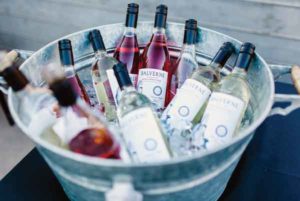
Proprietors Bob and Renee Stein experienced that awestruck moment in 1992, when they stood on the summit and admired the expanse before them. They named the property Notre Vue, which means “our view” in French. The Steins had a desire to plant French varietals, so the name was fitting. They sold grapes commercially to premium Sonoma and Napa wineries for the first 20 years of ownership.
Prior to the Steins purchasing the property, it had been known as Balverne Cellars, whose wines were poured at the Brown Derby and Spago in Los Angeles, Sparks Steakhouse in New York and even in the White House. Balverne was one of California’s first cult wines and crafted by John Kngsgaard and Doug Nalle, who went on to famous wiemaking careers of their own. In 1986, Balverne Cellars went out of business, and the winery sat idle for a few years before Bob and Renee purchased it.
When the Steins decided to begin making their own wine, they resurrected the Balverne label, which featured a red-tailed hawk in flight, and rebranded it as their own in homage to the winery’s history. They also founded the Notre Vue brand to reflect the winery’s new name. The first vintage of Balverne was made in 2012 and the first vintage of Notre Vue followed in 2014.
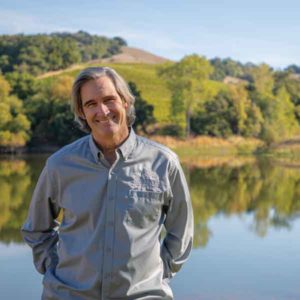
On this warm autumn day, we sit on a sofa on the winery’s terrace with winemaker Alex Holman and general manager Geoffrey Thompson for a tasting. In a typical tasting at Notre Vue, the server will ask guests which kinds of wines they prefer and bring out a selection based on their preferences. Today however, we sample some of Holman and Thompson’s favorites.
We begin with the 2021 Balverne Sauvignon Blanc. This wine is fermented cold, which is a slow process, says Holman. He adds, “Sauv Blanc tends to be either grassy, grapefruity or tropical. Our site seems to have both.” The wine is crisp and clean, with notes of honeyed lemon and grapefruit and a dash of spicy lemongrass.
Next, we try the 2020 Notre Vue Rose of GSM from Chalk Hill. “The main Rhone varieties in France are Grenache, Syrah and Mourverde, hence the name ‘GSM,’” says Holman. He adds that the winery makes a few different GSM wines, and each has a different combination of the percentages of each varietal. “This is 41 percent Grenache, 31 percent Syrah and 28 percent Mourverde.” The grapes are all picked on the same day and co-fermented for optimal flavor and subtlety. It’s also a lower-alcohol wine, as in the French tradition. Smooth on the palate and fruit-forward, it features notes of apricot, peach and nectarine, balanced by orange blossom and citrus.
As we sip, Holman and Thompson discuss the uniqueness of the estate. The property is 710 acres, with 200 acres planted. Comprised of two AVAs—Russian River and Chalk Hill—every winegrape is sourced directly from the estate.
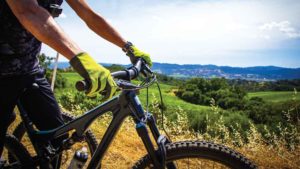
We then try the Chardonnay Musque 2019 of Russian River Valley. The winery grows a uniquely aromatic clone of Chardonnay that has more terpenes—the aromatic compounds that give fruits their smells and flavors—than other varietals. He adds that the Chardonnay grape typically doesn’t have a strong flavor—the traditional oak and butter flavors come from the winemaking. This Chardonnay, however, is fermented in a neutral oak barrel, which brings out creaminess and mouthfeel without adding oakiness. The limited manipulation to the wine allows the natural flavors to shine through. It displays notes of green apple, nectarine and Asian pear.
We move onto reds with the 2019 Balverne Pinot Noir of Russian River Valley. Pinot is special, says Holman, because it is less tannic than other red wines, and maintains a fruity profile. “You want a wine that is going to sit in the glass, and you can sip it all through dinner,” he says. The wine features notes of cherry, plum, raspberry and strawberry, with a hint of pomegranate and herbal tea.
Lastly, we try the 2019 Balverne Cabernet Sauvignon of Chalk Hill. The wine is a blend of Bordeaux varietals, with 79 percent Cabernet Sauvignon, nine percent Petit Verdot, nine percent Malbec and three percent Cabernet Franc. On the nose, it has aromas of dark cherry. On the palate, it is fruit-forward and more tannic than the previous wines. Rich notes of black cherry and cranberry are balanced by a hint of floral notes and chocolate shavings.
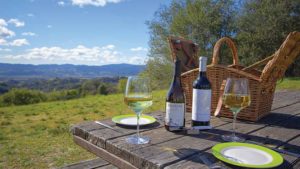 A visit to the winery’s beautiful property of rolling hills blanketed by oak trees and miles of vineyards makes it easy to understand the winery’s motto: notre vue, notre vie, notre vin, which translates to “our view, our life, our wine.” Good wine is made with care and showcases the natural beauty of the fruit. And nature should be treated the same way. Both are meant to be revered and enjoyed. It is a beautiful way to live.
A visit to the winery’s beautiful property of rolling hills blanketed by oak trees and miles of vineyards makes it easy to understand the winery’s motto: notre vue, notre vie, notre vin, which translates to “our view, our life, our wine.” Good wine is made with care and showcases the natural beauty of the fruit. And nature should be treated the same way. Both are meant to be revered and enjoyed. It is a beautiful way to live.
At a Glance
Hours: Open Thursday to Monday from 11 a.m. to 3:30 p.m.
Tasting Fee: $35 per person at The Terrace, $65 per person at the Lakeside guided “Eau De Vie” tasting
Wines: 2021 Balverne Sauvignon Blanc, 2020 Notre Vue Rose of GSM, 2019 Chardonnay Musque, 2019 Balverne Pinot Noir, 2019 Balverne Cabernet Sauvignon
Reservations: Required
Picnics: Yes, with gourmet food box purchased with Reservation
Pets: Yes. Friendly dogs welcome, on a leash.
Did You Know?
Winemaker Alex Holman focuses on native fermentation in his winemaking. This is when the indigenous yeasts from the vineyard are used in primary fermentation, and non-fermenting yeast strains are used during the initial cold soak to extract optimal texture and flavor from the grapes. This has a few benefits. Less sulfites are required, resulting in less interference with the winegrapes’ natural aromas, flavors and colors. Wines made in this style are lower in alcohol, fruit-forward and soft on the palate.
Author
-
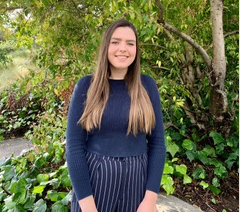
Summer Young moved to Sonoma County in 2018 to attend college and fell in love with the area. She's passionate about promoting all that the region has to offer through her work in local business marketing and journalism. When she's not writing, she can be found drinking coffee and exploring new places with her husband.
View all posts


